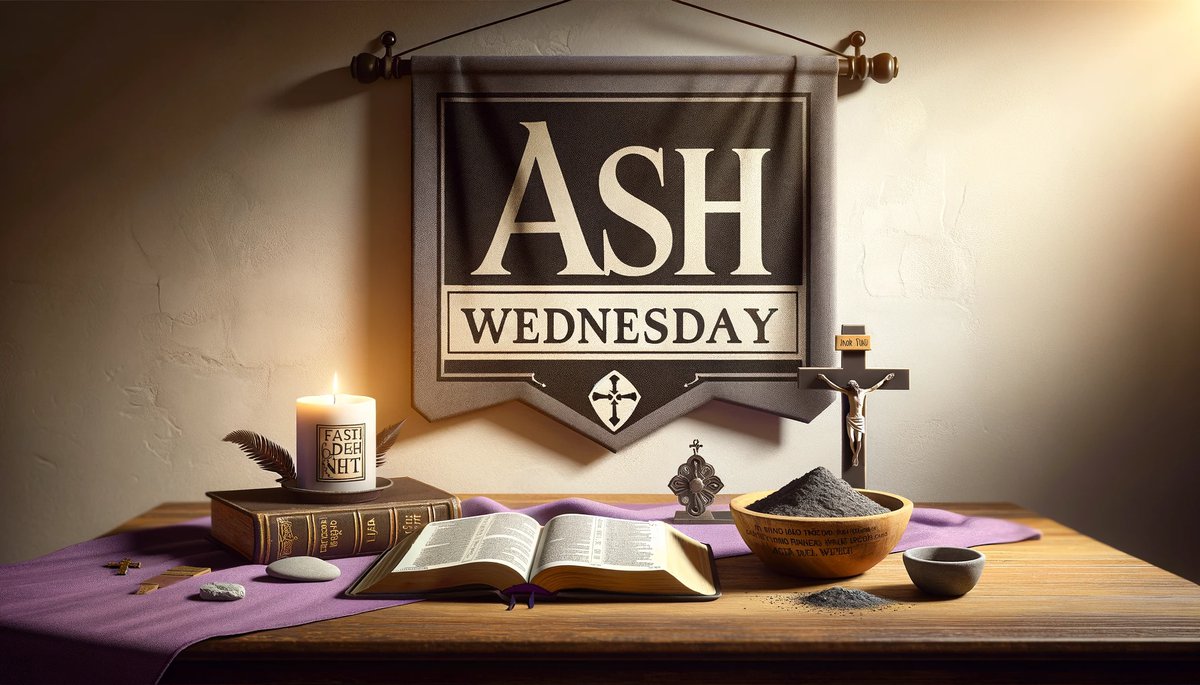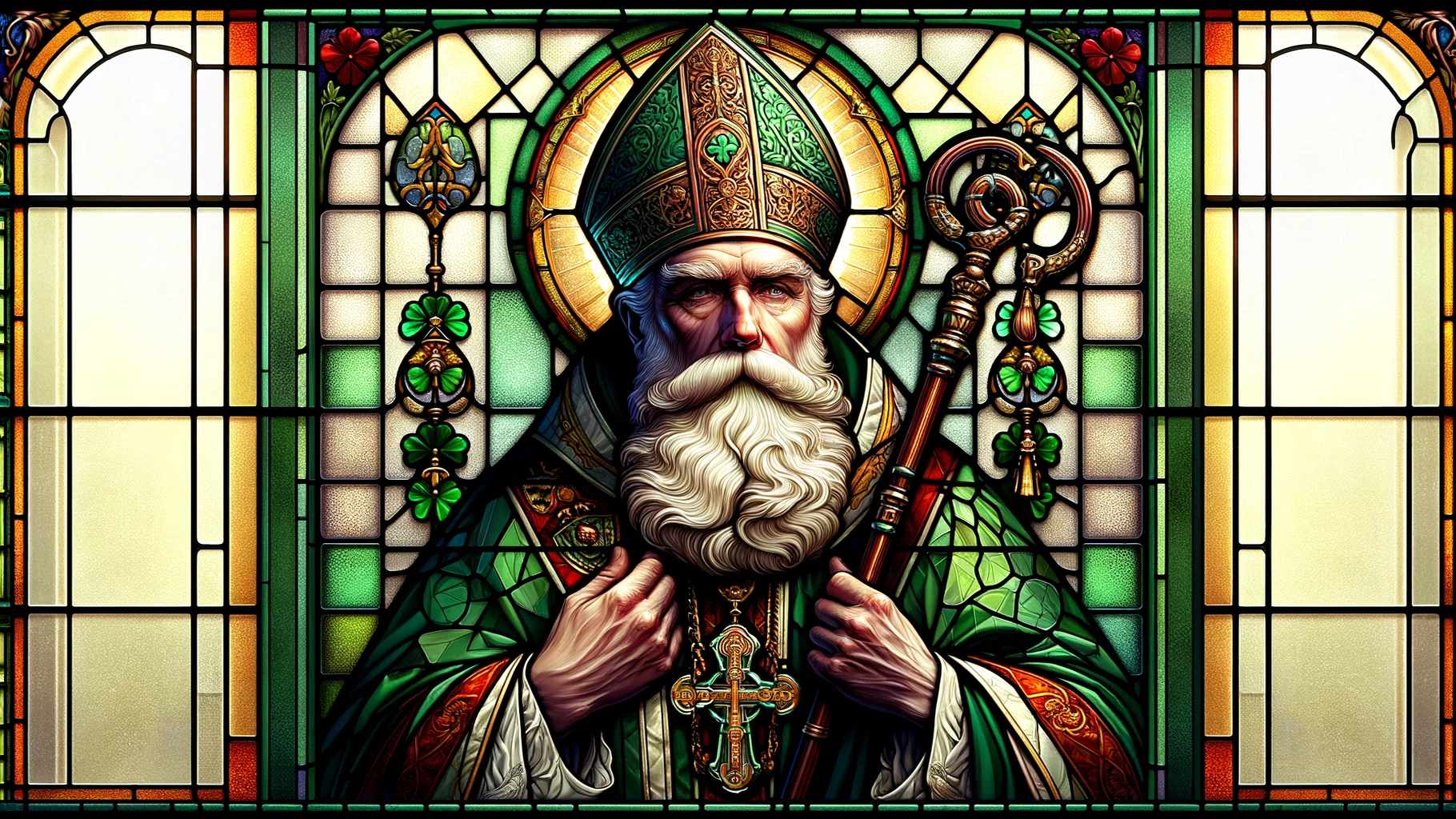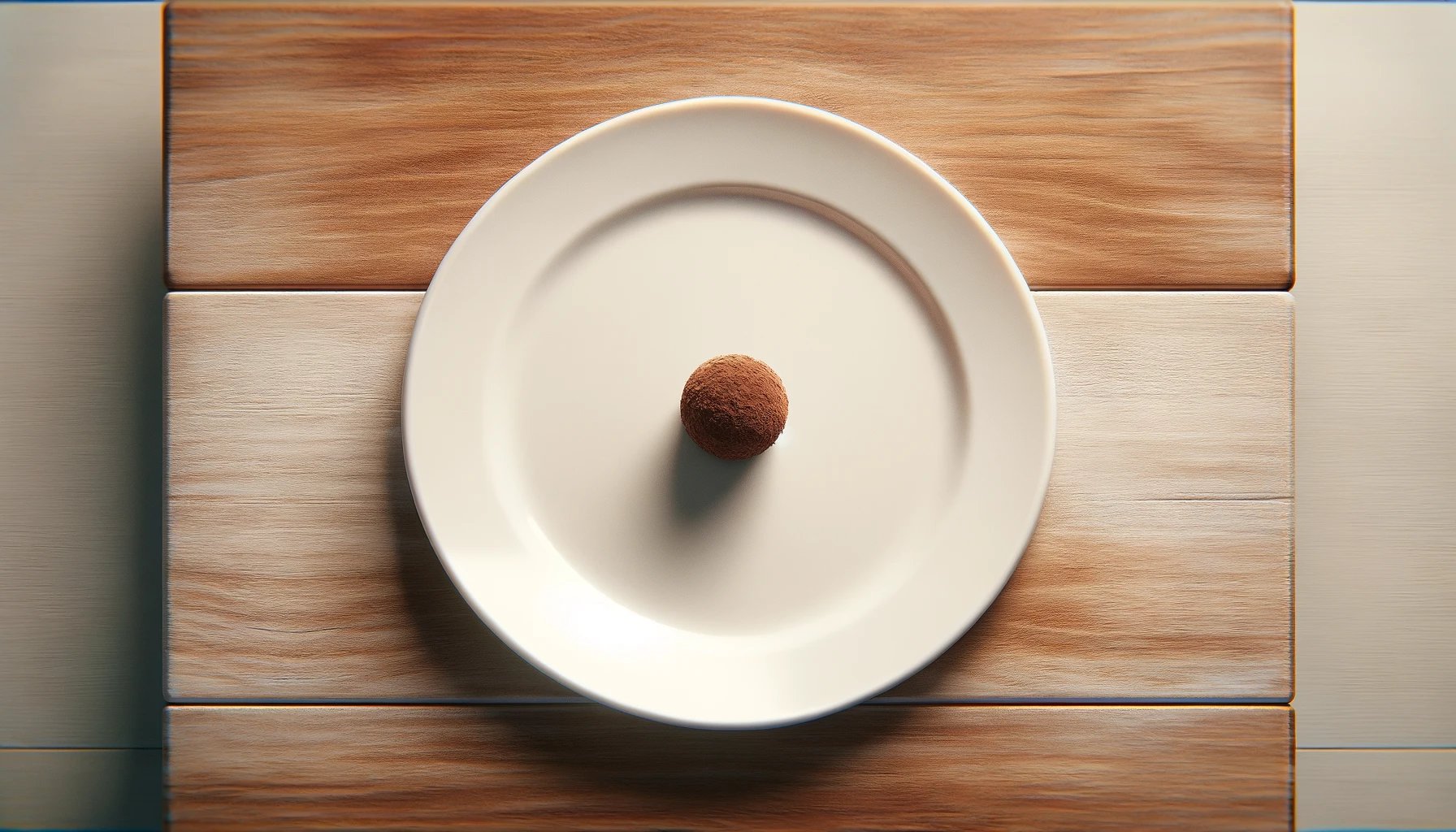Home>Special Themes>What Food Was Traditionally Eaten On The Day Before Lent Begins?


Special Themes
What Food Was Traditionally Eaten On The Day Before Lent Begins?
Published: February 27, 2024
Ericka Andersen, an editor at Christian.net, expertly merges digital strategy with content creation, focusing on faith and societal issues. Her communication skills enhance the platform's engaging narratives, fostering meaningful dialogue on belief's impact on society.
Discover the traditional foods eaten on the day before Lent begins, and explore the special themes and significance behind these culinary traditions. Uncover the historical and cultural significance of these special themes in food.
(Many of the links in this article redirect to a specific reviewed product. Your purchase of these products through affiliate links helps to generate commission for Christian.net, at no extra cost. Learn more)
Table of Contents
Introduction
What Food Was Traditionally Eaten on the Day Before Lent Begins? Shrove Tuesday, also known as Fat Tuesday or Pancake Day, is the day before the start of Lent. It is a time for indulgence before the fasting period of Lent begins. On this day, people traditionally consume rich and fatty foods as a way to use up ingredients such as eggs, milk, and sugar before the 40-day fasting period. The most popular food associated with Shrove Tuesday is pancakes, but different cultures around the world have their own traditional foods for this day. In this article, we will explore the history of Shrove Tuesday and the traditional foods eaten on this day in various parts of the world.
The History of Shrove Tuesday
Shrove Tuesday has its roots in the Christian tradition of Lent, a period of fasting and abstinence leading up to Easter. The word "shrove" is derived from the Old English word "shrive," which means to confess one's sins and receive absolution. In the medieval Christian calendar, Shrove Tuesday was the last day before the start of Lent, and it was a time for people to confess their sins and be "shriven" or absolved by the church.
The tradition of using up rich foods on Shrove Tuesday has its origins in the need to clear the pantry of ingredients such as eggs, milk, and sugar, which were traditionally prohibited during the Lenten fast. By making pancakes or other rich foods on Shrove Tuesday, people could use up these ingredients and indulge before the period of fasting began. Over time, Shrove Tuesday evolved into a day of feasting and celebration, with people coming together to enjoy a final indulgent meal before the solemnity of Lent.
In addition to its religious significance, Shrove Tuesday has also become a day of community and celebration in many cultures. In the United Kingdom, it is known as Pancake Day, and communities come together to participate in pancake races and other festivities. In other parts of the world, Shrove Tuesday is celebrated with parades, parties, and other events that mark the transition from the revelry of Carnival to the introspection of Lent.
Traditional Shrove Tuesday Foods Around the World
-
Pancakes: In the United Kingdom and Ireland, pancakes are the quintessential Shrove Tuesday food. These thin, flat cakes are made from a batter of eggs, flour, and milk, and are traditionally served with sugar and lemon juice. The tradition of pancake flipping has also become a popular activity on Pancake Day, with people competing to see who can flip their pancake the highest without dropping it.
-
Paczki: In Poland, Shrove Tuesday is celebrated with the indulgent treat known as paczki. These deep-fried pastries are filled with jam or other sweet fillings and are a symbol of indulgence before the Lenten fast. The tradition of eating paczki on Shrove Tuesday has spread to Polish communities around the world, where these delectable pastries are enjoyed as a pre-Lenten treat.
-
Beignets: In New Orleans, Louisiana, the tradition of Shrove Tuesday is celebrated with the iconic beignet. These deep-fried pastries, dusted with powdered sugar, are a staple of Mardi Gras celebrations and are enjoyed as a final indulgence before the start of Lent. The French influence in New Orleans has made beignets a beloved part of the city's culinary tradition, especially during the festive season leading up to Lent.
-
Fasnachts: In Pennsylvania Dutch country, Shrove Tuesday is known as Fasnacht Day, and the traditional treat associated with this day is the fasnacht. These square-shaped doughnuts are made with potato flour and are fried to golden perfection. They are often enjoyed with coffee or as a sweet snack to mark the occasion.
-
Semla: In Sweden, Shrove Tuesday is celebrated with the indulgent pastry known as semla. These sweet buns are filled with almond paste and whipped cream, making them a rich and decadent treat. The tradition of eating semla on Shrove Tuesday has been a part of Swedish culture for centuries and continues to be a beloved tradition to this day.
-
Fastelavnsboller: In Denmark, Shrove Tuesday is known as Fastelavn, and the traditional treat associated with this day is the fastelavnsbolle. These sweet buns are filled with whipped cream or jam and are often topped with icing and sprinkles. Fastelavnsboller are enjoyed as a way to indulge before the start of Lent and are a beloved part of Danish culinary tradition.
These traditional Shrove Tuesday foods from around the world reflect the cultural diversity and culinary creativity associated with this day of indulgence and celebration. Whether it's pancakes in the UK, paczki in Poland, or beignets in New Orleans, the tradition of enjoying rich and decadent foods on Shrove Tuesday is a time-honored custom that brings communities together to mark the transition from the revelry of Carnival to the solemnity of Lent.
Pancake Day in the UK
In the United Kingdom and Ireland, Pancake Day, also known as Shrove Tuesday, is a highly anticipated and cherished tradition. On this day, people come together to indulge in the delicious and versatile treat of pancakes. The tradition of making and consuming pancakes on Shrove Tuesday has been a part of British culture for centuries, and it is a time for families and communities to gather and enjoy this simple yet delightful dish.
The classic pancake recipe consists of a batter made from eggs, flour, and milk, which is then poured into a hot pan and cooked until golden brown. Once cooked, the pancakes are traditionally served with a sprinkling of sugar and a generous squeeze of lemon juice. This simple yet delicious combination of flavors has become synonymous with Pancake Day in the UK, and it is a tradition that is eagerly anticipated by people of all ages.
One of the most beloved customs associated with Pancake Day in the UK is the tradition of pancake flipping. This lighthearted and entertaining activity involves tossing a pancake in the air and attempting to catch it back in the pan without letting it fall to the ground. Pancake flipping has become a popular pastime on Shrove Tuesday, with families and friends engaging in friendly competitions to see who can execute the perfect flip. In addition to being a fun and festive activity, pancake flipping adds an element of excitement to the day's celebrations and brings people together in a spirit of lighthearted camaraderie.
In many communities across the UK, Pancake Day is also marked by the tradition of pancake races. These lively and spirited events involve participants racing through the streets while flipping pancakes in a pan. The objective is to reach the finish line without dropping the pancake, and the races are often accompanied by cheering crowds and a jubilant atmosphere. Pancake races have become a cherished part of the Pancake Day festivities, and they serve as a joyful reminder of the sense of community and togetherness that defines this special day.
Pancake Day in the UK is not only a time for indulging in delicious food but also a day for coming together as a community and celebrating the traditions and customs that have been passed down through generations. Whether it's the simple pleasure of savoring a freshly made pancake or the joy of participating in a lively pancake race, Pancake Day in the UK is a time-honored tradition that brings people together in a spirit of merriment and unity.
Mardi Gras in New Orleans
Mardi Gras, also known as Fat Tuesday, is a vibrant and exuberant celebration that takes place in New Orleans, Louisiana. This annual festival is a time of revelry and merrymaking, marked by colorful parades, elaborate costumes, and lively street parties. Mardi Gras is deeply rooted in the cultural and religious traditions of New Orleans, and it is a time for people to come together and indulge in the festivities before the solemnity of Lent.
One of the most iconic symbols of Mardi Gras in New Orleans is the traditional pastry known as the beignet. These deep-fried pastries, dusted with powdered sugar, are a beloved part of the city's culinary tradition and are enjoyed by locals and visitors alike. The indulgent and decadent nature of beignets makes them a fitting treat for the celebratory atmosphere of Mardi Gras, and they are often enjoyed as a final indulgence before the start of Lent.
In addition to the culinary delights of beignets, Mardi Gras in New Orleans is also known for its elaborate parades and vibrant street celebrations. The city comes alive with the sounds of jazz music, the sight of colorful floats, and the energy of enthusiastic revelers. The parades feature intricately designed floats, adorned with elaborate decorations and manned by costumed riders who toss beads, trinkets, and other treasures to the cheering crowds. These parades are a spectacle of creativity and artistry, showcasing the unique cultural heritage of New Orleans and the spirit of joy and celebration that defines Mardi Gras.
The tradition of Mardi Gras in New Orleans is deeply intertwined with the city's history and identity, and it is a time for people to come together to celebrate their shared heritage and traditions. The festive atmosphere of Mardi Gras creates a sense of unity and camaraderie among the people of New Orleans, as they join together to revel in the excitement and pageantry of this beloved annual celebration.
Mardi Gras in New Orleans is a time-honored tradition that embodies the spirit of joy, creativity, and community. It is a celebration that brings people together to indulge in the pleasures of life before the period of reflection and sacrifice that comes with the observance of Lent. The vibrant and lively traditions of Mardi Gras in New Orleans continue to captivate and inspire people from all walks of life, making it a cherished and enduring part of the city's cultural heritage.
Read more: What Is The Last Sunday Before Lent Called
Other Traditional Foods Eaten on Shrove Tuesday
In addition to pancakes, paczki, beignets, fasnachts, semla, and fastelavnsboller, there are many other traditional foods that are enjoyed on Shrove Tuesday around the world. These foods reflect the diverse culinary traditions and cultural practices associated with this day of indulgence and celebration. Some of the other traditional foods eaten on Shrove Tuesday include:
-
Crepe Suzette: In France, Shrove Tuesday is celebrated with the classic dessert of Crepe Suzette. These thin pancakes are flambéed with orange liqueur and served with a sweet and tangy orange sauce. The indulgent and sophisticated nature of Crepe Suzette makes it a fitting treat for the festive occasion of Shrove Tuesday.
-
Bun and Cheese: In Jamaica, Shrove Tuesday is known as Bun and Cheese Day, and the traditional treat associated with this day is a sweet, spiced bun served with a slice of cheese. This unique combination of flavors reflects the cultural diversity of Jamaica and is a beloved part of the country's culinary heritage.
-
Sfenj: In Morocco, Shrove Tuesday is celebrated with the delicious fried doughnuts known as sfenj. These light and airy pastries are made from a simple yeast dough and are deep-fried to golden perfection. Sfenj are often enjoyed with a dusting of sugar or a drizzle of honey, making them a delectable and indulgent treat for the occasion.
-
Oliebollen: In the Netherlands, Shrove Tuesday is marked by the tradition of enjoying oliebollen, which are deep-fried sweet dumplings. These delightful treats are studded with raisins and dusted with powdered sugar, making them a popular and beloved part of the Dutch culinary tradition.
-
Malasadas: In Hawaii, Shrove Tuesday is celebrated with the Portuguese-inspired treat of malasadas. These light and fluffy doughnuts are deep-fried and coated with sugar, creating a sweet and indulgent delicacy that is enjoyed by people of all ages.
These traditional foods eaten on Shrove Tuesday reflect the rich and diverse culinary heritage of different cultures around the world. Whether it's the elegant Crepe Suzette in France, the flavorful Bun and Cheese in Jamaica, or the delightful Sfenj in Morocco, the tradition of indulging in rich and decadent foods on Shrove Tuesday is a universal custom that brings people together to celebrate the joy and abundance of life.














